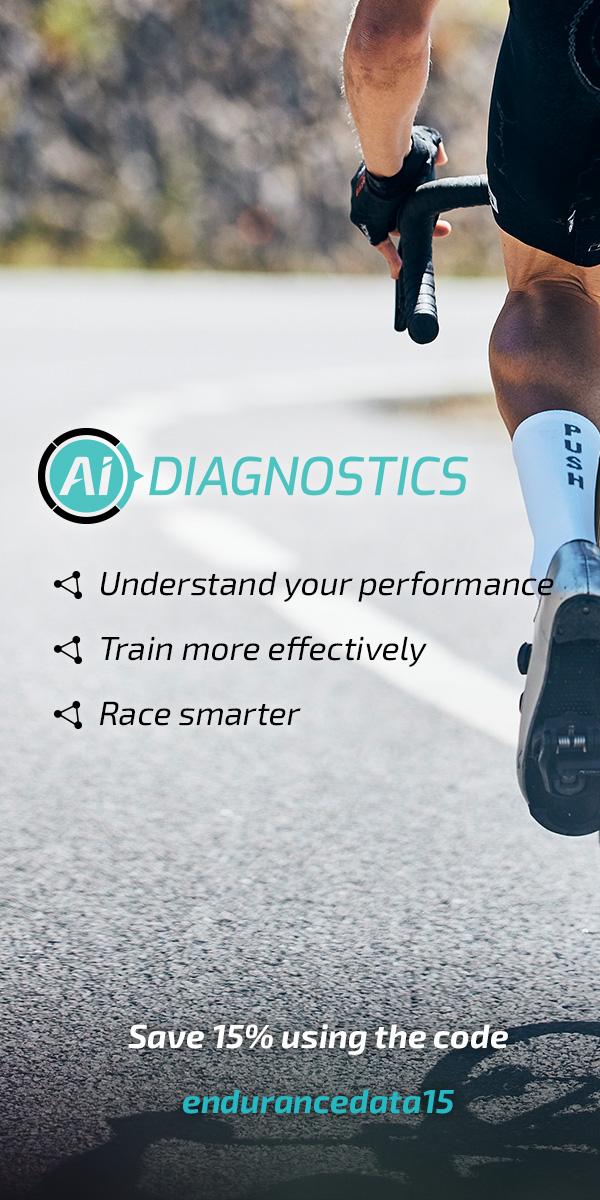Performance Testing, Key Metrics, and Their Impact on Training and Racing
Jakob Ohlsen Published: 15th May 2023
Introduction
Optimal performance in triathlon is achieved through careful planning, consistent training, and well-thought-out strategies. Performance testing and the analysis of key metrics, such as VO2max, VLamax, and threshold power, play a crucial role in this process. This post will discuss the opportunities and limitations of performance testing in the lab and on the road, the significance of crucial metrics, and their application in improving training, racing strategy, and nutrition.
The Importance of Performance Testing
Performance testing is vital for determining an athlete's current fitness level and pinpointing areas for improvement. It enables progress tracking and tailoring of training plans to individual strengths and weaknesses. The most important key metrics to consider are:
- VO2max: Represents the maximum amount of oxygen the body can utilise during intense exercise. It is measured in milliliters of oxygen per kilogram of body weight per minute (ml/kg/min). A higher VO2max indicates better cardiovascular fitness and endurance capacity.
- VLamax: Reflects the maximal rate of lactate production in the muscles and serves as a parameter for anaerobic performance. Lower VLamax values indicate a reduced metabolization of carbohydrates and a reduced glycolytic capacity, while higher values signal higher glycolytic capacity and increased consumption of carbohydrates. In long and middle distance triathlon, generally a low VLamax value is thus aimed for.
- Threshold Power: Denotes the highest power output an athlete can maintain for an extended period without fatiguing. This metric is essential for determining race pace and intensity in longer events, but should always be considered in conjunction with the latter metrics, as this is the only way to obtain a holistic picture of an athlete's performance.
The Use of Performance Testing in Training and Racing
Understanding and monitoring the key metrics VO2max, VLamax, and threshold power as a whole can help athletes optimize their training and racing strategies. These metrics, when considered together, provide a comprehensive metabolic profile of an athlete:
- Intensity: Analyzing the metabolic profile, can help athletes determine the ideal training intensity for specific workouts. This enables them to target areas for improvement, such as increasing aerobic capacity or reducing carbohydrate consumption.
- Strategy: By considering the athlete's metabolic profile, personalized race pacing strategies can be devised. These metrics provide information on the power an athlete can sustain over a period of time, its effect on carbohydrate depletion and to what extent the athlete can handle spikes in the power output.
- Nutrition: The metabolic profile derived from performance testing can shed light on nutritional needs during training and racing. Athletes with high VLamax values may require additional carbohydrate intake to fuel high-intensity efforts, as their glycolytic capacity is higher. Conversely, those with low VLamax values may benefit from a more balanced macronutrient distribution.
By taking a holistic approach and evaluating VO2max, VLamax, and threshold power together, athletes can gain deeper insights into their unique strengths and weaknesses. This comprehensive understanding can help them devise effective training programs, racing strategies, and nutritional plans to maximize their potential and achieve their goals.
Opportunities and Limitations of Performance Testing
Performance testing can be conducted in a lab or on the road, each with its unique opportunities and limitations.
Lab testing presents an environment that is controlled, allowing for accurate and reliable data collection, along with the capacity to use customized testing protocols. However, this method can be expensive and may not be as specific to real-world conditions as on-road testing. Furthermore, lab testing may not accurately reflect performance during actual races, adding another layer of complexity.
On the other hand, on-the-road testing allows for a more realistic performance assessment. This method is cost-effective and adaptable to various terrains, weather conditions, and equipment choices, providing a more dynamic and practical testing environment. However, on-the-road testing comes with its own set of challenges. Controlling variables can be difficult, and the data collected may be less accurate. There's also a reliance on wearable devices and subjective feedback. Simple test protocols, such as the FTP test, are feasible on the road and make it possible to track general trends in performance development, but they do not provide detailed insights into the composition and occurrence of performance.
It's also important to consider that an athlete's fitness on the test day may not accurately reflect their fitness on training or competition days. Various factors, including fatigue, stress, or illness, can impact the test results, making it crucial to consider an athlete's overall training history and performance trends, rather than relying solely on individual test results. Regular testing can help account for these variations and provide a more comprehensive picture of an athlete's fitness.
Performance Analysis with AI DIAGNOSTICS [Advertisement]
A novel methodology developed by our partner AI DIAGNOSTICS allows for comprehensive performance analyses by means of an easy-to-perform field test. The unique analysis process combines artificial intelligence with the latest findings of sports science and can thus make the insights of classical laboratory diagnostics accessible to everyone.
The methodology allows for simple and precise performance diagnostics for cyclists and triathletes of all performance levels, effective training management and sophisticated competition strategies.
Visit ai-diagnostics.net to learn more about AI DIAGNOSTICS and use the code endurancedata15 to get a 15% discount on all AI DIAGNOSTICS analysis packages.
Conclusion
Performance testing and the analysis of key metrics like VO2max, VLamax, and threshold power are indispensable components of a successful triathlon training plan. By comprehending these metrics and their implications, athletes can tailor their training, racing strategies, and nutrition plans to maximize their potential and achieve their goals.








